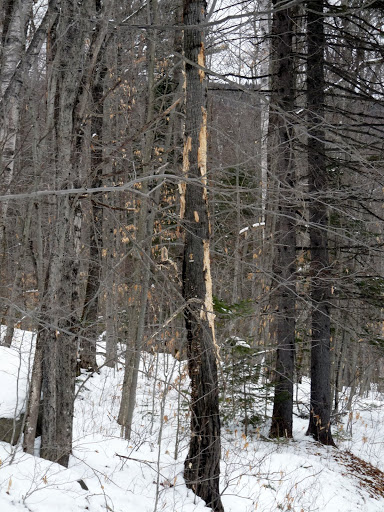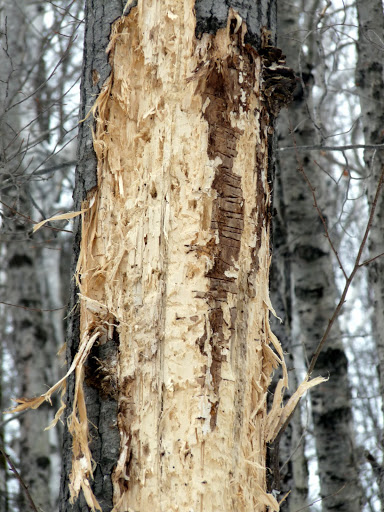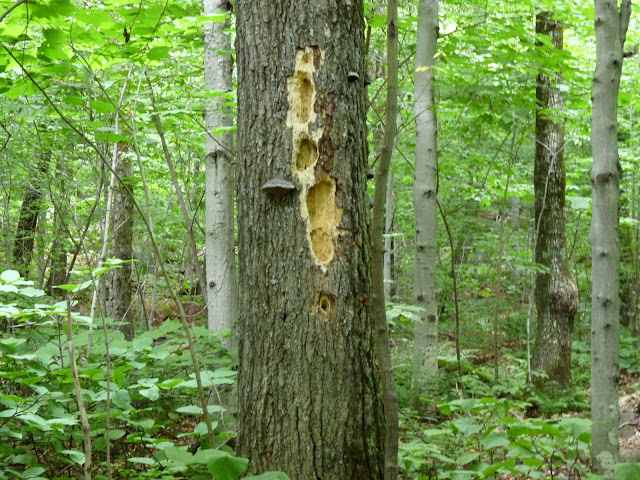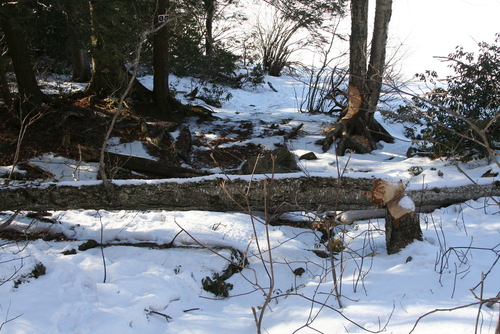I think the tree is solid enough to hold at least a cub, though parts of the tree look like the bark has been pried sideways and/or upward, which might be difficult for a climbing bear to do with claws - but maybe it used jaws too, or maybe the close-up was taken close to the ground.
Here's another odd animal behavior:
There's no question as to the culprit - tooth marks and tracks are very clear. What confuses me is the tree in the foreground - it's a several yards *upstream* of the pond (in background), with, as you can see, a number of obstacles between it and the pond. I can't imagine a lone beaver or pair of beavers dragging this tree to the water, so why bother felling it? Hoping for big floods to carry it down in the spring? Clearing the canopy so more yummy willows can grow? If the latter, why only target birches?






